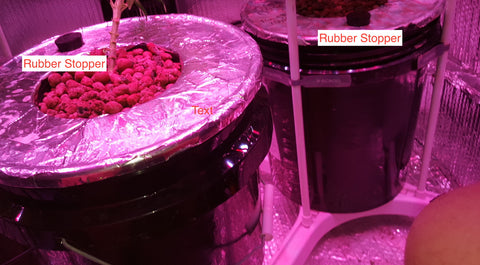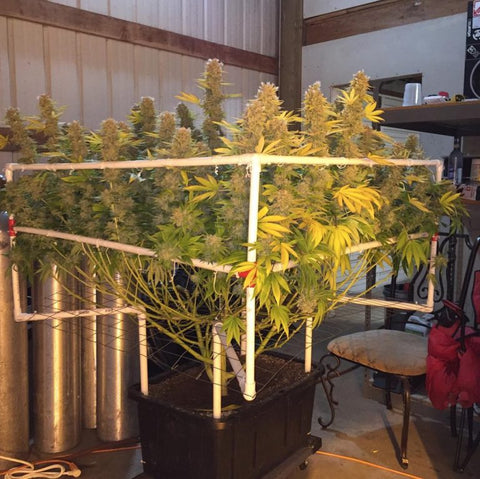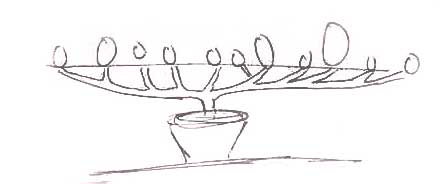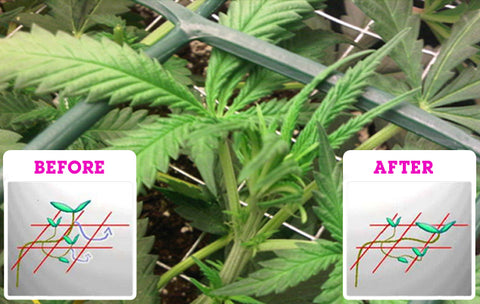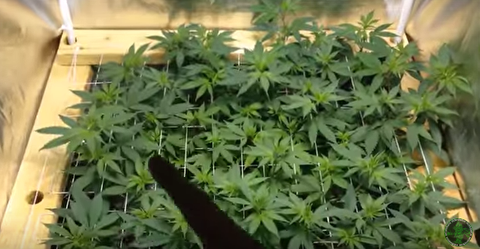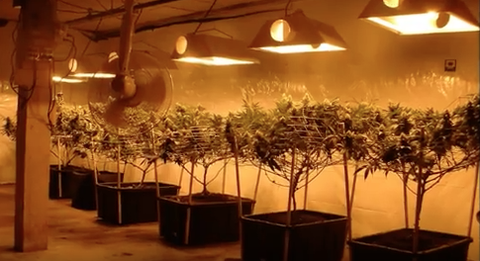ScrOG blOG™ — best scrog guides
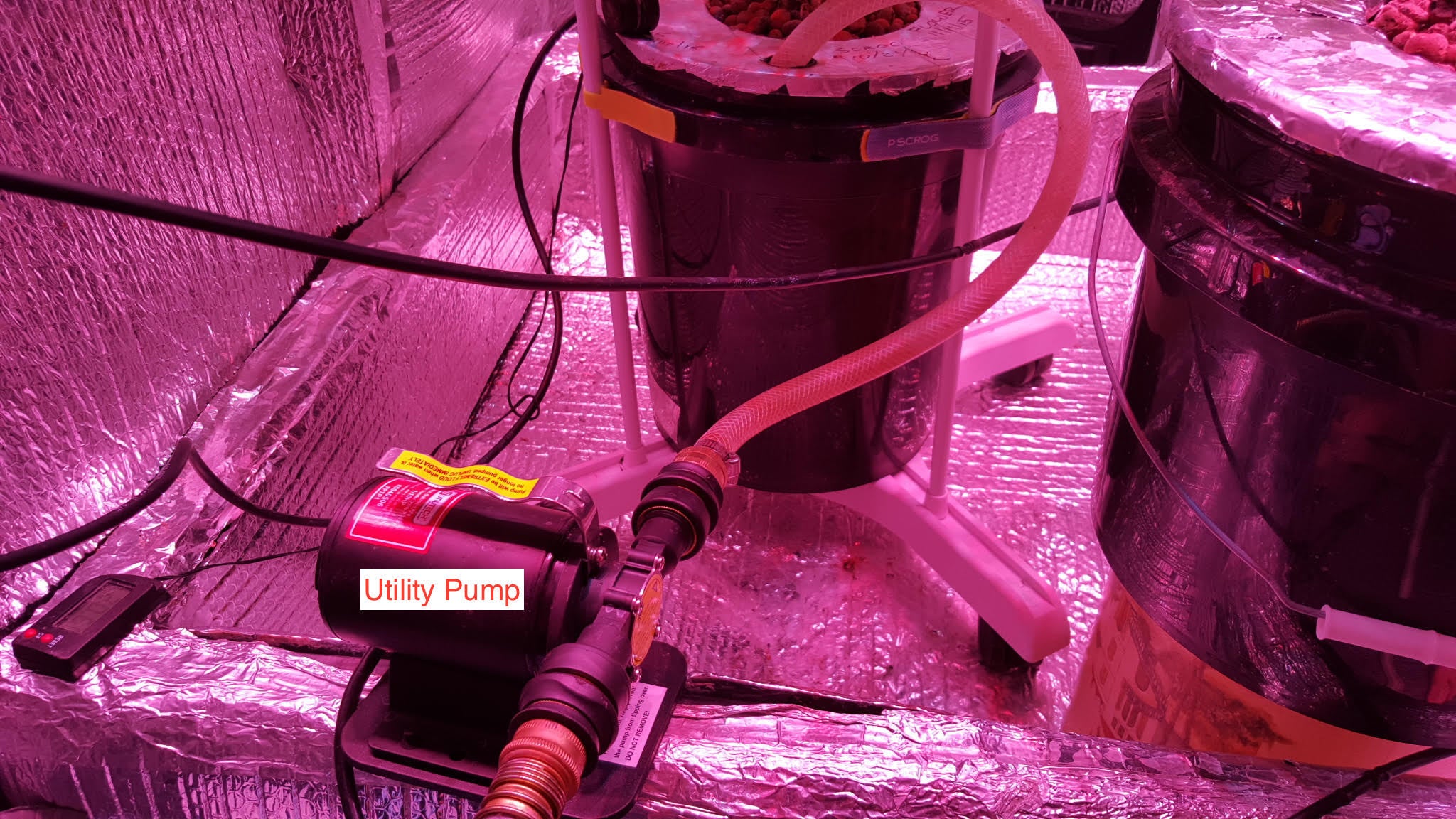
Changing nutrients under a DWC ScrOG
ScrOGging with Deep Water Culture (DWC) presents unique challenges compared to other methods of growing under a ScrOG. The biggest issue DWC growers struggle with is topping off and changing out nutrients (nutes). However, DWC growers can enjoy all the benefits of ScrOG without ever removing the net pot, disturbing the plant, ScrOG or root zone with this simple method.

2 x 5 gal individual portable DWC ScrOG using P SCROG Primary Kits
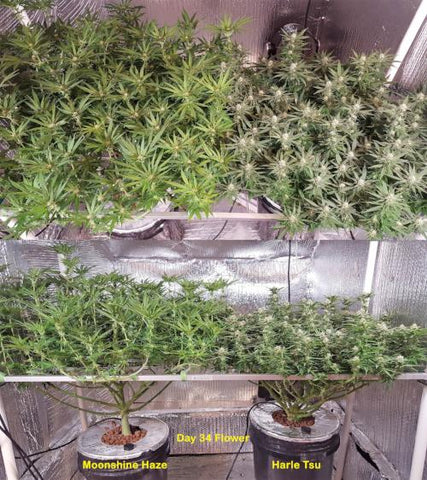
2 x 5 gal DWC under framed and fixed P SCROG 2x4 Kit
Like anything else, there may be many solutions to this issue. One solution you may find quite useful involves exchanging nutes with a pump and topping off between changes with a watering can.
Nutes can be changed using a common small utility pump found at most hardware stores.
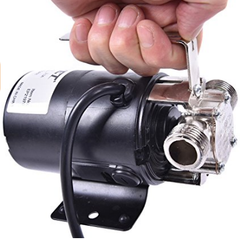
It is best to prepare your buckets at the beginning of the grow. Drill a hole in your net pots big enough to receive the end of a garden hose and buy rubber stoppers to plug holes when not in use.
The pump utilizes common garden hoses to transfer liquids. In the case of DWC, the nutes are sucked into the pump and pushed out the other end. The flow is unidirectional so the gardener uses the pump's input to suck old nutes out. Then the pump's output hose is used to push old nutes into an empty "old nutes" bucket. Old nutes can be used on outdoor plants, don't throw them away!
The pump's hoses are reversed to add new nutrients to your grow's DWC buckets. Then the pump's input hose is used to push fresh nutes into your grow's buckets.
IMPORTANT!
DWC reservoirs of healthy cannabis plants are full of robust and abundant root systems that will burn out your pump if sucked into the intake side. This is easily addressed with "hose filters" found at hardware stores. Some pumps come with filters.
The filter should be placed in the end of the hose that goes into the reservoir, not the end that screws onto the pump. This placement makes it easier to clear any accumulated debris during pumping.

Hose Filters
Amazon. Home Depot, Lowes
Root debris will accumulate in filters during the process and should be kept clean to avoid blockage and burning out the pump.
In between exchanges, nutes can easily be topped off using a common watering can through the same holes.
Note
Reservoirs and root zones can be kept clean through use of H2O2 after each nute exchange and/or through the use of Hydroguard.
If you have another solution you would like to share, please reply to this ScrOG blOG.

or
SupportOurPlants@SCROGGER.com

Best "How to ScrOG" Guides
Sea of Green (SOG) vs Screen of Green (ScrOG)
A great deal of confusion exists regarding the difference between Sea of Green (SOG) vs Screen of Green (ScrOG) methods of growing cannabis. Before I present what I consider to be some of the better "How to ScrOG" Guides, allow me to briefly define the difference between SOG and ScrOG.


- Ease of providing individual plant care - When 2 or more plants are placed under a single ScrOG net, those plants are typically treated the same out of necessity. Growers have trouble getting to plants at the far reaches of the grow. All plants are treated the same despite their strain maturity level or health.
- Simple to move around if necessary - If you need to pull a plant from a grow for any reason, you need to cut the net and remove it, leaving remaining plants unsupported.
- Improved light distribution - Growers can rotate, custom adjust heights, plants grow at different rates and mature a different rates.
- Easy to remove troubled plant from grow space, lowers risk of damage to remaining crop
- Easier to water and flush
- Allows gardener to harvest plants individually at precise maturity
- Eliminates crawling under nets/wire mesh
- Wheel chair / handicap accessibility
- Irrigation equipment accessibility
- A single plant can be scrogged at an optimal time in its growth cycle. Otherwise, only the most aggressive growing plants enjoy the full benefit of Screen of Green.
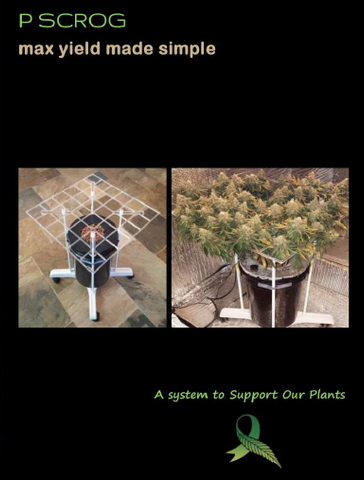
P SCROG Techniques

P SCROG Kits
or
SupportOurPlants@SCROGGER.com
- Gary Memelstein
- Tags: best how to scrog guides best scrog guides cannabis plant training grow lights growing cannabis how to scrog hydroponics indoor grow lollipopping lst optimal light band intensity scrog scrog kit scrog method scrog product scrog screen scrog technique scrogging topping trellis trellis net
